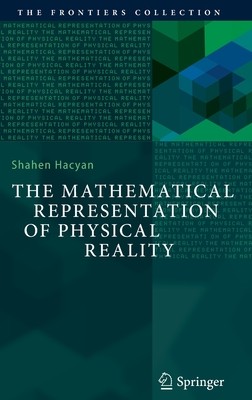
- Išsiųsime per 10–14 d.d.
- Autorius: Shahen Hacyan
- Leidėjas: Springer
- ISBN-10: 3031212533
- ISBN-13: 9783031212536
- Formatas: 15.6 x 23.4 x 1.1 cm, kieti viršeliai
- Kalba: Anglų
- Extra -20 % nuolaida šiai knygai su kodu ENG20
The Mathematical Representation of Physical Reality + nemokamas atvežimas! | knygos.lt
Atsiliepimai
Aprašymas
This book deals with the rise of mathematics in physical sciences, beginning with Galileo and Newton and extending to the present day. The book is divided into two parts. The first part gives a brief history of how mathematics was introduced into physics--despite its "unreasonable effectiveness" as famously pointed out by a distinguished physicist--and the criticisms it received from earlier thinkers. The second part takes a more philosophical approach and is intended to shed some light on that mysterious effectiveness. For this purpose, the author reviews the debate between classical philosophers on the existence of innate ideas that allow us to understand the world and also the philosophically based arguments for and against the use of mathematics in physical sciences. In this context, Schopenhauer's conceptions of causality and matter are very pertinent, and their validity is revisited in light of modern physics. The final question addressed is whether the effectiveness of mathematics can be explained by its "existence" in an independent platonic realm, as Gödel believed.
The book aims at readers interested in the history and philosophy of physics. It is accessible to those with only a very basic (not professional) knowledge of physics.
EXTRA 20 % nuolaida
Kupono kodas: ENG20
Akcija baigiasi už 17:07:00
Nuolaidos kodas galioja perkant nuo 10 €. Nuolaidos nesumuojamos.

- Autorius: Shahen Hacyan
- Leidėjas: Springer
- ISBN-10: 3031212533
- ISBN-13: 9783031212536
- Formatas: 15.6 x 23.4 x 1.1 cm, kieti viršeliai
- Kalba: Anglų
This book deals with the rise of mathematics in physical sciences, beginning with Galileo and Newton and extending to the present day. The book is divided into two parts. The first part gives a brief history of how mathematics was introduced into physics--despite its "unreasonable effectiveness" as famously pointed out by a distinguished physicist--and the criticisms it received from earlier thinkers. The second part takes a more philosophical approach and is intended to shed some light on that mysterious effectiveness. For this purpose, the author reviews the debate between classical philosophers on the existence of innate ideas that allow us to understand the world and also the philosophically based arguments for and against the use of mathematics in physical sciences. In this context, Schopenhauer's conceptions of causality and matter are very pertinent, and their validity is revisited in light of modern physics. The final question addressed is whether the effectiveness of mathematics can be explained by its "existence" in an independent platonic realm, as Gödel believed.
The book aims at readers interested in the history and philosophy of physics. It is accessible to those with only a very basic (not professional) knowledge of physics.




Atsiliepimai